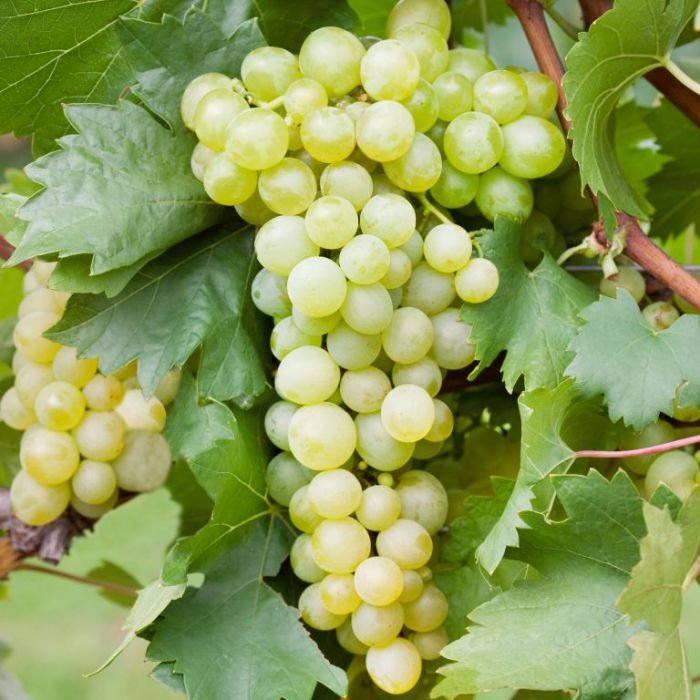Let’s Get Back to Chardonnay!!
Are you a member of the Anything but Chardonnay Club?
Or are you open and excited to explore the wide variety of types and styles that this grape varietal of international renown can offer?
The “oaky and buttery” style, popularized in many markets during the 1980s and 1990s, has caused much polarization and dissent against the grape and its wines to this day. Yet anyone who really knows Chardonnay knows that this is NOT the only style of wine this grape variety can create! From still to sparkling, fresh, lean and mouthwatering to rich, full-bodied and complex, Chardonnay is ubiquitous, and is a well sought-out and prized grape variety!
THE QUEEN OF WHITE GRAPE VARIETIES
Chardonnay is early-budding and early-ripening, making it suitable to grow in the coolest of climates yet amenable to warm climates, where it acquires higher sugar content and riper fruit flavours. In spite of its susceptibility to spring frost and a few vine diseases (grey rot, powdery mildew, millerandage and grapevine yellows), with good canopy management, it can produce relatively high yields without loss of quality.
GROWING BEYOND ITS FRENCH BEGINNINGS
Bourgogne is considered Chardonnay’s spiritual home! Wines produced in this region are regarded as models for many producers and consumers around the world, with the marl limestone of cool to moderate-climate Bourgogne thought to be where the grape varietal is most happy and where it best expresses itself. However, there are many examples of high-quality Chardonnay produced around the world, from the United States (especially California and Oregon) to Australia, Chile to South Africa, and even in New Zealand and Italy! This extensive range of climates and soil types greatly impact the primary aromas and flavours, and the varying degrees of alcohol, body and acidity that can be found in Chardonnay wines. This is why Chardonnay is one of the most widely planted white grape varieties in the world!
In cool climates, Chardonnay wines show green tree and citrus aromas and flavours along with notes of minerality, light to medium body and high acidity. In moderate climates, the wines offer aromas and flavours of riper citrus, stone and sometimes tropical fruit, with medium to full body and medium to high acidity. In warm climates, there are riper stone and tropical aromas and flavours, along with medium-plus to full body and medium acidity.
WINEMAKING OPTIONS MAKE THE DIFFERENCE(S)
Chardonnay is also highly regarded for its ability to showcase the winemaker’s skills. Along with the aforementioned primary aromas and flavours, it is common to experience secondary characteristics from the various (and optional) winemaking techniques that can be used in wine production. Malolactic conversion can soften harsh acids (especially in cooler climate wines) and add a range of dairy flavours (butter and cream), while lees (dead yeast cells) contact during maturation can add body and texture along with bread and/or biscuit flavours. Oak barrel fermentation and/or fermentation can add body to the wine along with flavours such as cedar, vanilla, coconut and numerous spices. And, of course, we cannot forget about some of the more celebrated Chardonnays in the world; the Sparklings! Sparkling wine production methods can be used to add further complexity and texture. Options include the capturing the carbon dioxide naturally produced through continued (Méthode ancestral) or second fermentation (Méthode Traditonnelle) in bottle or inert vessel (specially-reinforced stainless steel tank), or through the addition of carbon dioxide in a sealed vessel (Charmat or tank method).
Since intense secondary aromas and flavours can easily overwhelm Chardonnay wines with lighter primary aromas and flavours, only those wines with sufficient primary aroma and flavour intensities will be best suited for the impact of the winemaking processes mentioned above.
THE (R)EVOLUTION OF CHARDONNAY
So now we better understand the source of the “oaky and buttery” flavours of the Chardonnays of the ‘80s and ‘90s, which still appeal to some of the consumer base. Thankfully, the 2000s have realized significant evolution from this style, with Producers showing increased focus on terroir and innovation, and a marked return to elegance and balance. Some producers prefer not to add secondary flavours to their Chardonnay, instead using inert vessels such as stainless-steel tanks, or neutral oak barrels, and may avoid malolactic conversion and/or lees contact. Others may use a combination of new oak barrels and inert vessels for maturation, or only mature a percentage of the newly-made Chardonnay wine in oak barrels to be then blended with wines matured in inert vessels.
With so many types and styles to choose from, it would be remiss for us dismiss Chardonnay! So, go forth and explore, especially from the not-so-well-known regions listed below!!
Argentina
Uco Valley
Luján de Cuyo
Australia
Tasmania (Sparkling)
Chile
Límari Valley
Bío Bío Valley
England
Kent and Sussex (Sparkling)
France
Jura
Italy
Lombardy- Franciacorta (Sparkling)
Trentino- Trentodoc (Sparkling)
Puglia
South Africa
Simonsberg-Paarl
Western Cape
Robertson- Méthode Cap Classique (Sparkling)
USA
Virginia
California- Fort-Ross Seaview AVA
Get In The Know! The village of Chardonnay that gave its name to this celebrated varietal is located in the Haut-Mâconnais in Bourgogne!



